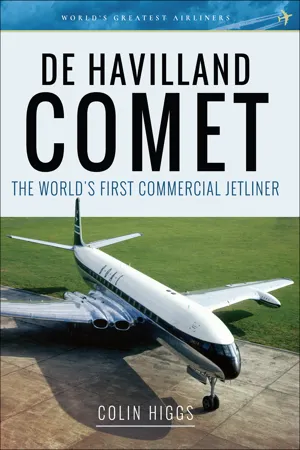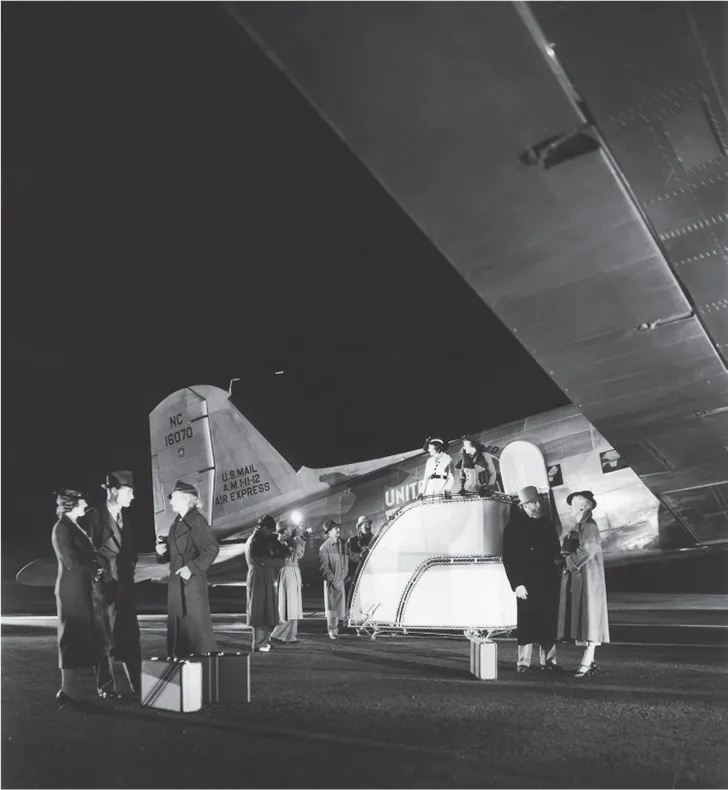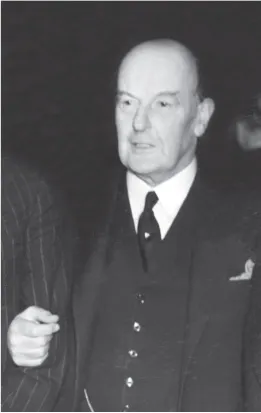![]()
CHAPTER 1 Genesis
THE AVAILABILITY OF money and the concentration of minds on beating the enemy means that wartime always speeds up technical development, and the years of the Second World War were no different. Britain’s prowess at building bombers and fighters was second to none, though the United States had similarly progressed with its work on both military and civil transport aircraft with the ubiquitous Douglas C-47 leading the way.
United Airlines’ Douglas DC-3 NC16070 with passengers waiting for their flight from New York to Los Angeles in 1937. The DC-3 was the apotheosis of pre-war airliner design. (John Stroud Collection at AFH)
It became obvious that when the war ended Britain would have to either send back, pay for or destroy all the aircraft that had come from the USA under the terms of the lend-lease agreement. The UK would need to buy new American transports for civil requirements, while the USA would have no need for any British military aircraft.
At the same time, Britain’s vital aircraft industry would founder without new orders to replace the deluge of work received during the war. So at a time when it was assumed that all of the government’s concentration would be on winning the war, they formed a committee with the sole aim of winning the peace – or, to put it accurately, to decide how best to tackle the requirements of civil aviation in Britain, its Empire and the Commonwealth after the fighting had ended.
John Moore-Brabazon was an aristocratic car enthusiast who became one of Britain’s earliest aviation pioneers. He had flown for the first time in France, taking to the air in a Voisin biplane in November 1908. In 1910, at the age of 26, Moore-Brabazon became the holder of British pilot license No.1 and on the same day one of his best friends, Charles Rolls of Rolls-Royce fame, was awarded license No.2. Unlike Rolls, however, Moore-Brabazon survived his early months of flying and became one of the most important people in British aviation and the Comet story.
After serving with the Royal Flying Corps in the First World War, Brabazon stood for Parliament in 1918, becoming the Conservative MP for Chatham. Having worked his way through the party until he was made Minister of Transport in 1940, Brabazon took on the vital role of Minister of Aircraft Production in 1942. Unfortunately some uncompromising opinions forced his resignation at which point he was elevated to the House of Lords with the title of Lord Brabazon of Tara.
John Moore-Brabazon doing what he loved before flying took over, taking part in the French Grand Prix at Dieppe in 1908. (Private Collection)
With his background Brabazon was ideally placed to chair the new committee. The initial report came out quickly, within just a few months, and recommended a variety of aircraft to fulfill different roles. It was decided that the work demanded a second committee, again named after its chairman, to develop plans further and advise the government on how best to implement the first committee’s recommendations. This new committee included representatives from the Ministry of Aircraft Production, the Air Ministry and BOAC. The sole representative from an aircraft manufacturer was Geoffrey de Havilland.
It was initially proposed that six new aircraft types would be needed to fulfill all requirements. The committee released updates at various stages, each time providing further information about one of the types, until it presented its final report in 1945. By this time, the committee had already asked for tenders for its planned aircraft, and, in some cases, contracts had been issued. What emerged was virtually every civil aircraft design, successful or otherwise, built in Britain over the next ten years.
The contract for a Type I high-quality trans-Atlantic airliner was awarded to Bristol Aircraft. The massive Brabazon eight radial-engine airliner was destined to fly around 100 passengers across the Atlantic in luxury but never created the interest with airlines that had been expected. The single example flew in 1949, only to end up being scrapped in 1953.
Lord Brabazon photographed in March 1951.
The Bristol Brabazon, a massive eight-engine airliner named after the committee chairman. However, it was too big and expensive for the new post-war world of commercial aviation. (John Stroud Collection at AFH)
The Type II contract was more complicated. It was originally supposed to be for a feederliner, an aircraft to replace the pre-war Dragon Rapide and the DC-3. However BEA, destined to be the prime user, wanted something bigger. The revised decision was to split the new aircraft into two separate contracts.
Airspeed, the company co-founded by bestselling novelist and aircraft engineer Nevil Shute, delivered the Type IIa, which became the Ambassador. Vickers, for its part, received the Type IIb contract. This became the Vickers Viscount, the world’s first turboprop airliner, of which 445 were built and which became one of the most successful aircraft to come from the considerations of the Brabazon Committee.
The Type III contract for a large medium-range airliner designed to fly the Empire routes was also given to Bristol Aircraft. The Britannia turboprop was more successful than the Brabazon, with a total of eighty-five being built. However problems with icing caused delays to its engine development and this meant that it went into service just a year before the Boeing 707, restricting the potential customer base.
Contracts for the final two aircraft went to de Havilland which was based at Hatfield in Hertfordshire. This was the company that had perhaps been Britain’s most successful aircraft manufacturer between the wars, with its range of Moths and the graceful Dragon Rapide among many others. The Mosquito had kept the production line at full capacity during the Second World War but the company knew it would slow and it was vital that the factories had more to do.
Dan-Air’s Airspeed Ambassador G-AMAE at Gatwick in 1961. (Peter Keating Collection at AFH)
Vickers Viscount G-AOHW of British Airways at Wick in the far north of Scotland in 1975. (AFH)
BOAC’s Bristol Britannia G-ANBE in flight. (AFH)
A new Type V was added by the committee which revived the original small feederliner concept. This was the de Havilland Dove which first flew as early as 1945 and which sold in large numbers to airlines and air forces around the world. Other similar variants were then built, such as the Devon and the Sea Devon for Britain’s armed forces, and the Heron, which was a stretched four-engine version.
By far the most radical aircraft to come from the committee was the Type IV, a fully jet-powered airliner, the de Havilland Comet. Geoffrey de Havilland had urged the committee to support the concept, one that perhaps only his company had the experience to create. De Havilland had done much pioneering work in jet-powered designs for the RAF, aircraft such as the Vampire fighter, and was developing jet engines in-house as well. De Havilland was duly awarded the contract; now they had to make it work.
Frank, later Sir Frank, Whittle is credited with designing the first jet engine in the 1930s and in a few short years the idea came to fruition when he ran his Power Jets WU for the first time in April 1937. Official indifference to the concept caused financial difficulties for Power Jets until 1939 when the Air Ministry finally understood the value and potential of the jet engine and provided funds for the business.
De Havilland’s successful short haul airliner, the Dove. Here is an RAF example used for transport and communications flights. (AFH)
The Comet 1 prototype on one of its many test flights in August 1949. (BAE SYSTEMS)
The Gloster E28/39, powered by a Whittle jet engine, flew for the first time in May 1941, though the first press release announcing the extent of British secret jet engine projects was not published until January 1944. By then there were more than ten jet projects ...









